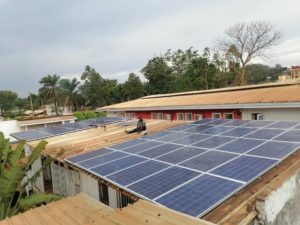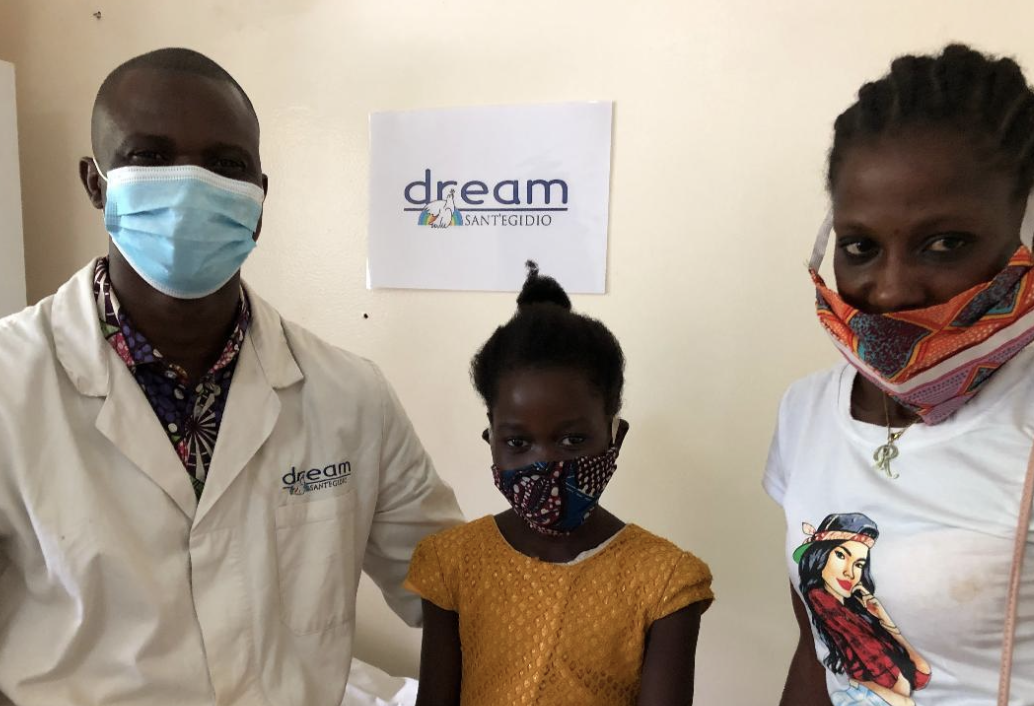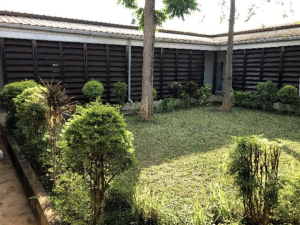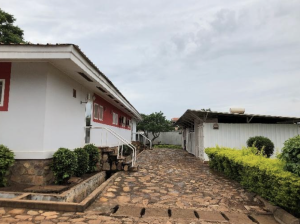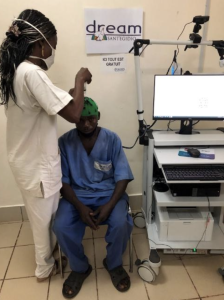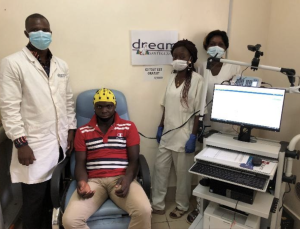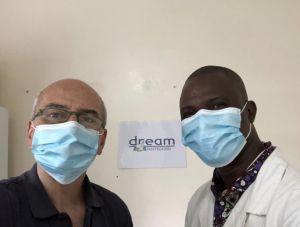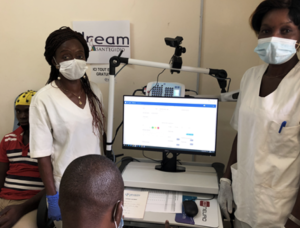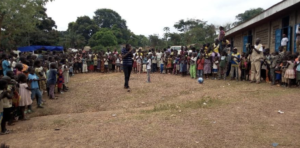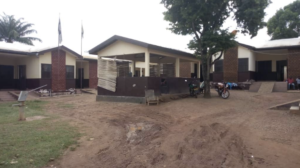Epilepsy Program in Central African Republic
Epilepsy Mission June-July 2021
Contents:
- First day at the DREAM epilepsy center in Bangui. From numbers to names, from images to faces, from news to stories
- The Central African Republic
- The Epilepsy-DREAM center in Bangui
- Installation of the country’s first video electroencephalograph
- Training of medical personnel
- Training of non-medical personnel. Culture of epilepsy in the population.
- Chronicity and epilepsy: retention and adherence, connective tissue to manage epilepsy
- Partnerships and epilepsy. Visiting health centers in the suburbs of the capital.
- Health and stability, tips for an organic vision.
- The Central African Republic and neighboring countries.
- Globalization has arrived in CAR
- Building peace in CAR: cooperation in health is a key factor
- DREAM centre in Bangui hub for anti-covid-19 vaccination in the country
- Solar energy at the DREAM Center in Bangui for an integral ecology
First day at the DREAM Epilepsy Center in Bangui
From numbers to names, from images to faces, from news to stories
Adel, 2 and a half years old, suffers from epilepsy since she was 4 months old, 5-6 seizures every day, and never received treatment for her disease, her mother managed the situation by giving her paracetamol, a do-it-yourself of desperation. We explain to her about the disease and the new medicines, her eyes shine, she goes away happy, with renewed hope for her little one.
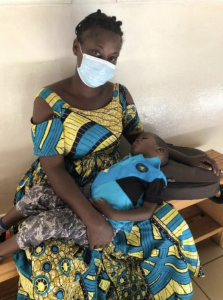
Margaret is 14 years old, epileptic for 3 years, she had stopped going to school. In March 2021, she came to the DREAM center for the first time. When I saw her again in June, she was free from seizures, and she started again to go to school. To reach the center, she walks for hours through dangerous districts of the city. Some sick people flock from the opposite bank of the Obangui River, from Congo DRC where they have no form of health care to seek health assistance at DREAM.
Juliet, 14 years old, she’s at DREAM for the first time today, seizures since the age of 7, she used to take antiepileptics in the past, but with frequent interruptions due to the inconsistent supplies in the hospital. Her mother tells us that she was treated at the mental health department of the university hospital (often people living with epilepsy – PLWE are entrusted to psychiatry) where she was administered phenothiazines. She hasn’t been to school for a long time. Her father suffered from hemiparesis, he can’t work, they don’t have enough money to buy medicines, and there is no social security in the country. After the visit and the interview, the mother and daughter leave relieved and grateful, and they will immediately start treatment.
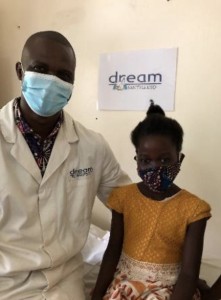
Raja is 17 years old; she has been suffering from epilepsy since the age of 6, and she has never been able to go to school. Schools refuse children with epilepsy; there is a widespread fear that it can be transmitted through saliva (drooling is frequent during seizures), so the families no longer send them to school. Her family is very poor, like many others, they have never been able to buy medicines. She has been coming to DREAM for 6 months, and for the first time she has been free from seizures for 5 months in a row. Raja and her mother are happy and full of gratitude. Now she can go back to school.
Adam is 17 years old, epileptic since 14, he went to various local healers who treated him with herbs – ineffective. He stopped going to school from the onset of the disease. At DREAM, for the first time, he can start treatment with antiepileptic medicine.
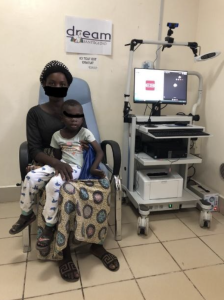
Angell is 16 years old, epileptic since 11, she comes to DREAM for the first time accompanied by her grandmother. Angell is a meek and good girl, she has many seizures during the week, the last one just before the visit. Up until two years ago when her grandfather was alive, thanks to his job, the family could buy anti-epileptic drugs, but not anymore. Angell has several scars on her face and head from falling to the ground during seizures. She has mild retardation; her grandmother takes care of everything. We see her again 15 days after the start of the treatment, and finally joyful: Angell has no more seizures. I get called by the staff to celebrate with them.
Esther is 16 years old and has epileptic seizures that are a bit peculiar: with hallucinations. For this reason, she instilled fear in those around her. Since she came to DREAM in 2019, she started treatment and the seizures have never recurred, she has also resumed going to school.
Bernard is 23 years old, epileptic for 8 years, we meet him today for the first time, he has never been given antiepileptic therapy, but he has seen various local healers and received different herbal cures without any benefit. With us, for the first time, he can be cured of his epilepsy.
Pascal is 38 years old, epileptic since 30, and treated at the psychiatric ward of the local hospital. In addition to antiepileptics, he was given large doses of psychotropic drugs. “I spent my days thrown into a corner”, he was unable to interact or work, and his family spent a fortune on medicines. Several months ago, he turned to DREAM, the treatments were amended, now he only takes those necessary for epilepsy. He hasn’t had seizures for months and has returned to a normal life. He is happy and grateful. In telling his story his eyes veil of tears, but rejoice, he embraces us all. Even though he’s been fine for months now, his gratitude doesn’t seem to have an end.
The Central African Republic
The CAR has 5 million inhabitants and 3 neurologists. Epilepsy is very common. In the whole country, there is only one state hospital where EEG can be performed: in the capital Bangui. Costs for an EEG cannot be afforded by more than 90% of the population (table); the same goes for a specialist visit and for antiepileptic drugs. There are many children with epilepsy and many families have poor access to treatment, despite the WHO’s long-standing hope for universal access to treatment for epilepsy.
There is olny one EEG in the government hospital in Bangui that is largely insufficient for the 1,5 million population of the city where the disease burden of epilepsy keeps growing.
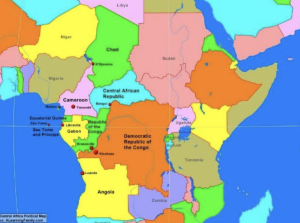
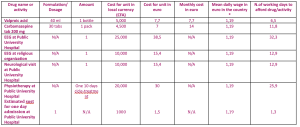
The Epilepsy Center at DREAM in Bangui, CAR
The DREAM center in Bangui (photos 2 and 3) has been operating in the country since 2019, from henceforth, the number of PLWE under care has continued to grow and we currently follow over 900 patients. The Epilepsy program is active in CAR Malawi since 2020, co-financed by the Mariani Foundation and the Besta Neurological Institute Foundation of Milan in partnership with the Italian Society of Neurology (SIN).
Installation of the country’s first video electroencephalograph
During one of the 2021 missions at the DREAM center in Bangui, we installed the first video EEG in the country (photos 4-7) purchased thanks to the Italian Development Cooperation. At DREAM, access to the EEG is free, as are medical visits, teleconsultations with European specialists, antiepileptic drugs, laboratory tests, and other services. The transmission of EEG recordings was also activated via the Global Health Telemedicine (GHT) platform with a specific course to local operators. Every year, the GHT provides thousands of teleconsultations with European specialists to clinicians based in several sub-Saharan countries. Hundreds of neurological teleconsultations have been carried out in the first few months. On the Italian side, thank to the GHT platform young neurologists receive training based on the telerequests coming from CAR and Africa. So far exchanges between Italian specialists and African clinicians are growing, as it is their knowledge. New skills on both sides (Italy and CAR) are emerging.
Training of medical personnel
Due to the pandemic, in person training was stopped in sub-Saharan Africa. With this latest mission, we have resumed the training in person, irreplaceable for task-shifting that is one of the objectives of the epilepsy program. A significant part of the training was done through coaching in the form of training on-the-job. The path is certainly long, we are just at the beginning.
Training of non-medical personnel. Culture of epilepsy in the population
In addition to the training of medical personnel, special care was dedicated to train non-medical personnel (photo 8, pre-covid). Training sessions were carried out dealing with basic neurology, brain anatomy, and electro-chemical mechanisms and functioning of neurons with the aim of increasing understanding of what epilepsy is, seen in the country – as in much of Africa – as a “supernatural” disease.
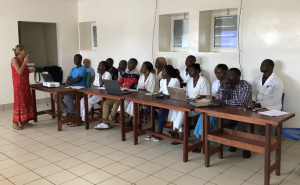
The training also aimed to make health care personnel familiar with the disease teaching them using the most appropriate words to provide understandable explanation of the disease to better approach PLWE and their families, to give them proper information and advices important also to give hope where there is not. A new way to allow health personnel to enter in the PLWE daily life, school, work, family etc. Fear and ignorance about epilepsy have deep roots in local culture. Can you imagine the dangers when health workers not convinced about the nature of epilepsy welcome PLWE? Teaching them how to approach PLWE is a challenge, it takes time, particularly to shift from fear to full trust. The role of health personnel is crucial in combating stigma. Most children with epilepsy stop/can no longer go to school and are isolated from the rest. A profound cultural change is necessary:
“there is a difference between a “training course” and a “training path”
When a person living with epilepsy is made seizure free thanks to appropriate diagnosis and treatment he/she can come back to normal social life, and people around can see the difference, start thinking differently about that person and the disease that epilepsy can be treated and is not transmitted. This in turn contributes to grow a new culture of the disease, an enrichment not only for the patient.
Chronicity and epilepsy: retention and adherence, connective tissue to manage epilepsy
Adherence to treatment and retention in care are crucial to properly managing chronic diseases including epilepsy. Hence an important part of the training was dedicated to these aspects. The long lasting experience accumulated since 2002 at DREAM in the management of another chronic disease as HIV is of great help for the purpose.
CAR health care system has few hospitals, almost all in the capital. In case of serious health issues, population has to reach city hospitals. Due to internal conflicts, the way to reach the capital is not avoid of risks. Education for and management of life threatening conditions absorb almost all the scarce resources including healthcare team education and training. This leave behind healthcare programs for chronic diseases. Priorities in the hospitals are not patients with chronic conditions but those affected by the most life threatening conditions. So, if a patient with a chronic disease doesn’t come back for check-ups, who does really care?
Chronic diseases slip into a forgotten limbo. Attention and assistance to patients suffering from chronic conditions are largely insufficient: shortage of health personnel and their burn out, poor training, lack of proper drug provision, are among the causes. The high mortality rate of non-communicable chronic diseases – stroke, epilepsy, etc. –is a consequence. To note that Iin sub-Saharan Africa almost half (42%) of the disease burden comes from non-communicable chronic diseases.
Good adherence and satisfactory retention of PLWE requires well-trained and motivated personnel.
In general dealing with chronic patients is certainly less gratifying than treating acute conditions where the value of the actions of healthcare workers is immediately seen and clear: – a life saved in a few hours, “I do, I save, here, now”. This touches the personnel deeply, and is highly motivating. With the chronically ill, this aspect is lacking. Management of chronic diseases requires different approaches compared to acute diseases and this is true for both health workers and patients (and other stake holders too).
The “hookup” of the chronic patient requires training – and culture – that is not included in the training on patients with acute conditions. Chronic care means also to build trust and relationship, it requires time, can be achieved visit after visit. Non communicable chronic diseases have become a huge challenge to health care systems in most of the world including Africa. Epilepsy is at the core.
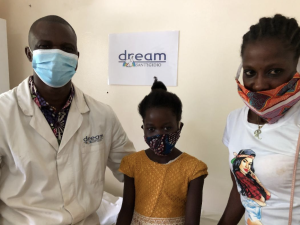
Partnerships and epilepsy. Visiting health centers in the suburbs of the capital
In Africa, there are numerous small health centers scattered around the vast territory, the only bulwark for the health of hundreds of millions of Africans, managed by the state or by charitable institutions (25 – 70%, according to the countries). These centers suffer from isolation, lack of exchanges, updating, training, connectivity, resources, and equipment. But they exist, and people know that they can go there in case of need.
In the last 30 years the fast speed population growth, the HIV pandemic and now the fast growing “epidemic” of non-communicable diseases such as epilepsy have left behind the fragile health care system in sub-Saharan Africa. DREAM has also developed partnerships with these centers in various sub-Saharan Africa countries providing training, innovation and technology. With this in mind, we visited health centers on the outskirts of Bangui where there are many PLWE.
Health and stability, pills for an organic vision.
- The Central African Republic and neighboring countries
CAR is a country twice the size of Germany with only 5 million inhabitants. Due to its position and resources, it has an important role in a vast geographic region that includes numerous sub-Saharan Africa countries.
To the north it borders Chad, overlooking the Sahel belt where al Qaeda and jihadist groups have been operating their raids for some time. To its west, there’s Cameroon, not far from the northeastern region of Nigeria where Boko Haram moves. To its east, lies the newborn state of southern Sudan, and to its south there’s the fragile Democratic Republic of Congo – scene of the recent assassination of the Italian ambassador Luca Attanasio – which separates it from and acts as a buffer with the unstable region of the great lakes (Rwanda, Burundi, Uganda).
Last presidential elections were followed by a phase of turbulence, groups of troublemakers blocked important communication routes paralyzing the supply of primary goods (roadblock strategy) 95% of which (including drugs) come from Cameroon via the port of Douala. Thanks to a patient and continuous work of reconciliation, the country has returned to breathe a more relaxed climate.
- Globalization has arrived in CAR
The military forces of the United Nations and the African Union in the country have proved insufficient in clearing the communication arteries as well as in protecting the population and the capital during the post election turbulence. Russia offered security by proposing Wagner contractors (sort of mercenaries) who have helped to restore the communication routes that had fallen (easily) under the control of insurgents. In the meantime the (largely uncontrolled) market of weapons is increasing dangerously in the country.
In addition to offering contractors in various areas of Africa (for example in Northern Mozambique, home to one of the largest gas field in the world and the second largest oil field), Russia has recently liberalized commercial activities with Africa, and strengthened diplomatic representation.
China is also present in CAR signing contracts for infrastructure in exchange for raw materials and the exploitation of rich territory: timber, mines, and more. Problems arises when services and infrastructures are offered to countries unable to pay the debt.
Africa has immense resources, holds over 70% of the world’s arable land, and is the youngest continent: growing ties with Africa have become a sort of gold rush.
- Building Peace in CAR: the health diplomacy
The Community of Sant’Egidio and Italy are actively involved to build a lasting peace in the country. The DREAM program offers health services for free to a poor population in trouble after many decades of conflicts. Italian doctors offer their help. The DREAM epilepsy program follows this approach. It contributes to a climate of trust and credibility in regard to the various ethnic and religious groups, and opens up new ways of dialogue, a bridge for other peacemaking and development activities.
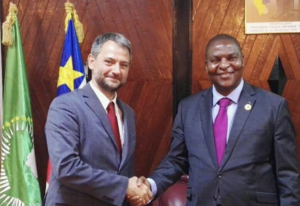
- DREAM – Bangui, anti-COVID-19 vaccination center
The DREAM center in CAR has recently received a mandate from the Ministry of Health to become a COVID vaccination center (photo 13). Management of the cold chain (maintenance of the fridge to store vaccines and electricity guaranteed 24 hours a day thanks to the solar panels) and good relations with the patients are among the factors that led the Minister to this decision. A sign of great confidence. Our facility has long been treating patients at risk of COVID: hypertensive, diabetic, HIV+, etc. who can now be protected by the vaccine. There are already thousands of vaccine doses administered at DREAM, a considerable number given the many problems with the rollout of vaccines. The challenge is to raise awareness among the population by gaining their trust, to clear away prejudices and conspiracy theories that hinder vaccination throughout Africa: vaccinating 1.3 billion Africans soon is also a mortgage for the future of Europe and the rest of the world. India doct.
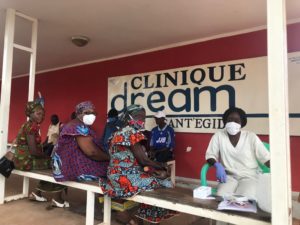
- Solar energy at the Dream center in Bangui for an integral eco-neurology
Integral ecology is at the heart of the DREAM program: human health and the environment are inseparable. And so also in Bangui, CAR, the Dream center is dressed in solar panels (photo 14) so that now it is completely self-sufficient in terms of energy supply. This guarantees the regular execution and transmission of the EEGs, avoiding dangerous voltage surges in the local electrical network which could damage the machinery and cause the loss of the acquired data.
